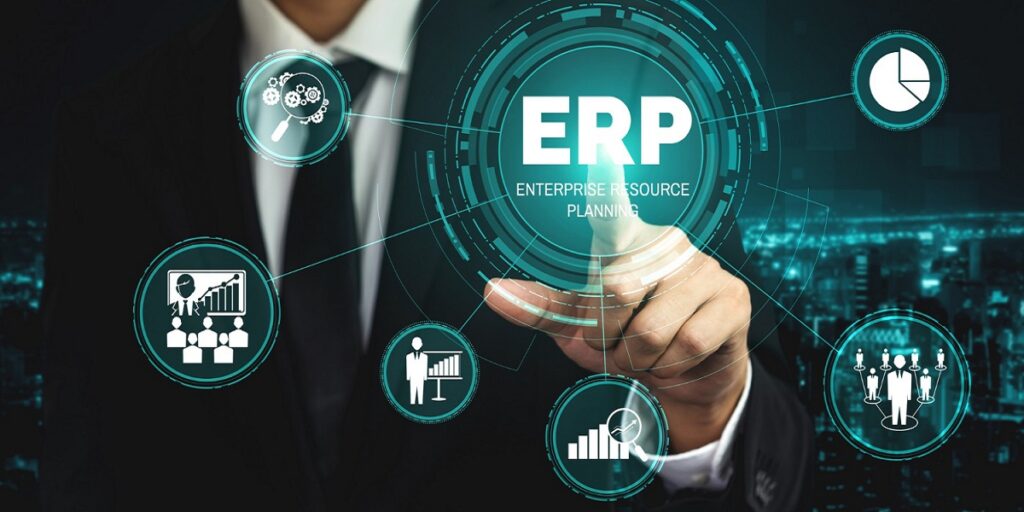Enterprise Resource Planning (ERP) is an integrated software system that helps businesses manage and streamline their core processes. These processes include finance, human resources, procurement, inventory management, supply chain operations, customer relationship management (CRM), and more. By integrating all these functions into a single system, ERP enhances operational efficiency, improves data accuracy, and supports better decision-making.
Businesses of all sizes, from small startups to multinational corporations, use ERP systems to automate processes, reduce manual errors, and improve collaboration across departments. The evolution of ERP has seen its transformation from traditional on-premise systems to cloud-based solutions, making it more accessible and scalable for organizations worldwide.
History and Evolution of ERP
ERP has its roots in the 1960s when businesses began using software to manage manufacturing and inventory control. Over the decades, ERP has evolved significantly:
- 1960s-1970s: The introduction of Material Requirements Planning (MRP) systems helped manufacturers optimize inventory and production schedules.
- 1980s: MRP expanded into Manufacturing Resource Planning (MRP II), integrating additional business functions like finance and HR.
- 1990s: The term “Enterprise Resource Planning” was coined as software companies developed comprehensive solutions that covered multiple business areas.
- 2000s-Present: Cloud-based ERP emerged, making systems more accessible, scalable, and cost-effective for businesses of all sizes.
Core Components of an ERP System
An ERP system consists of various modules that handle different business functions. Some of the most common ERP modules include:
1. Financial Management
This module manages an organization’s financial transactions, including:
- Accounting and bookkeeping
- Financial reporting and auditing
- Budgeting and forecasting
- Tax compliance and regulatory reporting
By automating financial processes, businesses can reduce errors and improve financial decision-making.
2. Human Resource Management (HRM)
HRM modules streamline workforce-related activities such as:
- Payroll processing
- Employee record management
- Recruitment and onboarding
- Performance evaluations
- Training and development
An integrated HRM system enhances employee productivity and ensures compliance with labor laws.
3. Supply Chain Management (SCM)
SCM modules help businesses optimize the flow of goods and services, covering:
- Inventory management
- Procurement and vendor management
- Order processing and fulfillment
- Logistics and transportation
By managing supply chain activities efficiently, companies can reduce costs and improve customer satisfaction.
4. Customer Relationship Management (CRM)
CRM modules focus on managing customer interactions and sales activities:
- Lead generation and tracking
- Sales pipeline management
- Customer service and support
- Marketing campaign management
A well-integrated CRM system enhances customer relationships and drives business growth.
5. Manufacturing and Production Planning
For manufacturing businesses, ERP systems provide tools to:
- Plan and schedule production
- Monitor equipment and machine usage
- Manage raw material procurement
- Track product quality and compliance
Manufacturers can optimize production cycles and minimize downtime using ERP.
6. Business Intelligence (BI) and Reporting
Modern ERP systems come with advanced analytics and reporting tools that help organizations:
- Analyze real-time business data
- Generate reports and dashboards
- Identify trends and insights for strategic decision-making
BI tools empower companies with data-driven decision-making capabilities.
Benefits of Implementing an ERP System
ERP systems offer numerous advantages to organizations, including:
1. Improved Efficiency
By automating business processes, ERP reduces manual work and streamlines operations, allowing employees to focus on strategic tasks.
2. Enhanced Collaboration
ERP centralizes data, making it accessible to different departments. This fosters better communication and collaboration across teams.
3. Real-Time Data Access
Businesses can access up-to-date information instantly, enabling quick decision-making and better resource allocation.
4. Cost Savings
By reducing inefficiencies, minimizing redundancies, and optimizing resources, ERP systems help businesses save money in the long run.
5. Regulatory Compliance
ERP systems ensure businesses comply with industry regulations by maintaining accurate records and generating compliance reports.
Challenges of ERP Implementation
Despite its benefits, implementing an ERP system can be complex and challenging. Common challenges include:
1. High Initial Costs
ERP implementation requires a significant investment in software, hardware, and training. However, cloud-based ERP solutions have made it more affordable.
2. Time-Consuming Deployment
Integrating an ERP system into an organization takes time, requiring careful planning and execution.
3. Employee Resistance to Change
Employees may resist adopting new technology due to unfamiliarity or fear of job displacement. Proper training and change management strategies are essential.
4. Data Migration Issues
Migrating existing data to a new ERP system can be challenging and requires data cleansing and validation.
Types of ERP Systems
ERP solutions are available in different formats, catering to various business needs:
1. On-Premise ERP
Installed locally on a company’s servers, on-premise ERP systems offer greater control but require higher maintenance and infrastructure costs.
2. Cloud-Based ERP
Hosted on the cloud, these solutions provide flexibility, scalability, and lower upfront costs. Popular cloud ERP providers include SAP, Oracle, and Microsoft Dynamics.
3. Hybrid ERP
Combining on-premise and cloud-based solutions, hybrid ERP provides businesses with the benefits of both deployment models.
Leading ERP Vendors
Several technology companies provide ERP solutions tailored for different industries. The most well-known ERP providers include:
- SAP ERP: A market leader in enterprise software solutions.
- Oracle ERP: Known for its powerful database integration and analytics capabilities.
- Microsoft Dynamics 365: A flexible ERP and CRM solution.
- NetSuite ERP: A cloud-based ERP solution for small and medium-sized businesses.
- Infor ERP: Designed for manufacturing and distribution industries.
Future Trends in ERP
The ERP landscape continues to evolve with advancements in technology. Key trends shaping the future of ERP include:
- Artificial Intelligence (AI) and Machine Learning (ML): AI-powered ERP systems enhance automation and predictive analytics.
- Blockchain Integration: Improves security and transparency in financial transactions.
- IoT (Internet of Things) Connectivity: Enhances supply chain and manufacturing operations.
- Mobile ERP: Increases accessibility with mobile-friendly ERP applications.
Conclusion
Enterprise Resource Planning (ERP) systems play a critical role in modern business management. By integrating various functions into a single platform, ERP enhances efficiency, improves collaboration, and enables data-driven decision-making. While challenges exist, the benefits of ERP far outweigh the drawbacks, making it a vital tool for organizations aiming to streamline operations and remain competitive in the digital age.
















